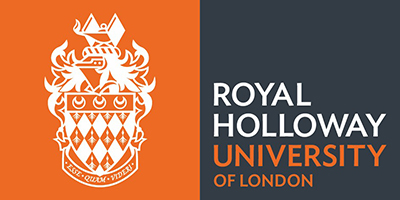Royal Holloway University (RHUL) UK

Royal Holloway University (RHUL) UK
Specific Department: University of London/ Warburg Institute.
Main individuals carrying out task
(1) Prof. Dr. Manos Tsakiris (male), Professor of Psychology, Royal Holloway; BIAS project at the Warburg Institute
Main tasks
Responsible for measures for body-awareness as well as political/prosocial attitudes (WP2-4) and assessment of specific changes from types of art experience (Task 2.1B/3.1B; lead: UNIVIE; support: HUB, RHUL). Will assist on experimental study regarding Political attitudes, engagement and relation to transformation-seeking artists and transformation potential in viewers. (Task 7.2 lead: UvA) and study of specific art experience types as an agent of transformation in political identity or attitudes toward marginalized (refugee) groups (Task 7.3, lead: AAU; support: RHUL, HUB). Will assist on Task 1.2 Final Selection of: (1) target transformative/social-change-focused artworks, (2) baseline representative museum artworks, (3) urban/street artworks, (4) refined/expanded empirical measures.
General Description
Royal Holloway University is a public research university and a constituent college of the federal University of London. It has three faculties, 20 academic departments and c. 9,200 undergraduate and postgraduate students from over 100 countries. Royal Holloway employs around 2,300 members of staff, including 534 academic staff and 132 research staff. The total number of undergraduate and postgraduate students is 10,325.
The Warburg Institute is one of the world’s leading centers for studying the interaction of ideas, images and society. It is dedicated to the survival and transmission of culture across time and space, with a special emphasis on the afterlife of antiquity. Its open-stack library, photographic collection and archive serve as an engine for interdisciplinary research, postgraduate teaching and a prestigious events and publication program. From its outset, the Warburg Institute has been notable for its interdisciplinary research extending across the histories of art, science and religion to anthropology and psychology. Its contributions to the epistemological and methodological underpinnings of the histories and theories of culture have been profound and paradigm- changing. One of the Warburg Institute’s distinctive features has always been its engagement with what are often considered the superstitious, irrational and emotional elements of cultural phenomena. This has enabled some of its most significant contributions to the understanding of both the dynamics and forms of cultural transmission. The Warburg Library, famous for its powerful and suggestive system of classification, has unique strengths in all these areas, but particularly in the fields of Byzantine, Medieval and Renaissance art, the history of humanism and the classical tradition, Italian history, Arabic, Medieval and Renaissance philosophy, and the histories of religion, science and magic.
Main individuals carrying out research
Significant infrastructure and/or items of technical equipment
Fully equipped psychophysiological lab (allowing the recording of heart rate, blood pressure, skin conductance, respiration), Transcranial Magnetic Stimulation, Functional Neuroimaging Scanner, EEG.

